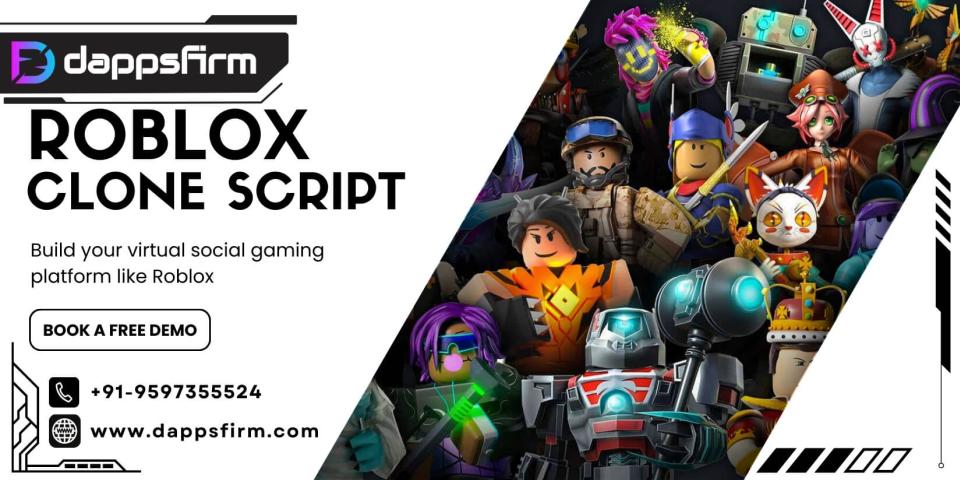In today's fast-paced digital world, on-demand service platforms like TaskRabbit have gained tremendous popularity. These platforms connect service providers with individuals seeking various tasks, from home repairs to errands. With the success of TaskRabbit, many entrepreneurs and businesses are eager to develop their own service marketplaces. One of the most efficient ways to achieve this is by using a TaskRabbit clone script. This article will provide an in-depth look at the development process of a TaskRabbit clone script, covering everything from initial planning to deployment and maintenance.
Understanding the Basics: What is a TaskRabbit Clone Script?
A Taskrabbit Clone Script is a pre-built, customizable software solution that replicates the functionality of the TaskRabbit platform. It enables businesses to quickly launch their own service marketplace without starting from scratch. These scripts come with essential features such as user registration, task posting, service provider profiles, payment gateways, and more. The primary advantage of using a clone script is the significant reduction in development time and cost.
Step 1: Market Research and Requirement Analysis
Before diving into development, it's crucial to conduct thorough market research. Understanding the needs and preferences of your target audience will help you tailor the platform to their expectations. Analyze the strengths and weaknesses of existing platforms like TaskRabbit, Handy, and Thumbtack. Identify gaps in the market that your platform can fill, whether it's offering niche services, improving user experience, or providing more competitive pricing.
Next, define the requirements of your platform. Determine the core features you want to include, such as task categories, user profiles, ratings and reviews, and communication tools. Also, consider additional features like real-time tracking, multi-language support, or AI-powered recommendations. This step will serve as the foundation for your TaskRabbit clone script development.
Step 2: Choosing the Right Technology Stack
The choice of technology stack plays a pivotal role in the success of your TaskRabbit clone script. A well-chosen stack ensures scalability, security, and optimal performance. Here's a breakdown of the key components:
Frontend Development: For the user interface, technologies like ReactJS, AngularJS, or VueJS are popular choices due to their flexibility and efficiency in building dynamic and responsive web applications.
Backend Development: The backend is the backbone of your platform, handling data processing, user authentication, and communication with the frontend. Common backend technologies include Node.js, Ruby on Rails, Django (Python), and Laravel (PHP).
Database: Your choice of database depends on the complexity and scale of your platform. SQL databases like MySQL and PostgreSQL are reliable options, while NoSQL databases like MongoDB are suitable for handling large volumes of unstructured data.
Payment Gateway Integration: Integrating secure and reliable payment gateways like Stripe, PayPal, or Square is essential for handling transactions on your platform.
Cloud Hosting: For hosting your platform, cloud services like AWS, Google Cloud, or Microsoft Azure offer scalability, security, and flexibility.
Step 3: Designing the User Interface and Experience
The user interface (UI) and user experience (UX) design are critical components of your TaskRabbit clone script. A well-designed UI/UX ensures that users can navigate your platform with ease and complete tasks efficiently. Start by creating wireframes and prototypes to visualize the layout and flow of your platform. Focus on simplicity and intuitive navigation, ensuring that users can easily post tasks, browse service providers, and make payments.
Incorporate responsive design principles to ensure that your platform works seamlessly across different devices, including desktops, tablets, and smartphones. Additionally, consider accessibility features to make your platform usable for individuals with disabilities.
Step 4: Development and Customization
Once the design is finalized, the development phase begins. This is where your chosen technology stack comes into play. The development process typically involves the following steps:
Frontend Development: Implement the user interface based on the wireframes and prototypes. This includes coding the layout, buttons, forms, and other visual elements using HTML, CSS, and JavaScript frameworks.
Backend Development: Develop the server-side logic that powers your platform. This involves setting up databases, creating APIs (Application Programming Interfaces), and implementing user authentication and authorization.
Integration of Features: Integrate essential features like task posting, service provider profiles, communication tools, and payment gateways. Customization is key here – tailor the features to match your unique business requirements and user preferences.
Testing and Debugging: Conduct thorough testing to identify and fix any bugs or issues. This includes functional testing (ensuring that features work as intended), performance testing (checking for speed and scalability), and security testing (protecting user data and transactions).
Step 5: Deployment and Launch
Once the development and testing phases are complete, it's time to deploy your TaskRabbit clone script. Choose a reliable hosting provider that offers scalability and security. Set up your domain and ensure that SSL certificates are in place to protect user data.
Before the official launch, consider running a beta test with a small group of users. This will help you gather feedback and identify any last-minute improvements that can be made. Once everything is in place, launch your platform and start promoting it through various channels, such as social media, email marketing, and online advertising.
Step 6: Post-Launch Maintenance and Updates
The journey doesn't end with the launch. Continuous maintenance and updates are essential to keep your TaskRabbit clone platform running smoothly and meeting user expectations. Regularly monitor the performance of your platform and address any issues that arise. This includes server maintenance, software updates, and security patches.
Additionally, stay engaged with your user base by gathering feedback and implementing new features based on their suggestions. As the market evolves, consider introducing innovations like AI-powered matching, blockchain-based payments, or augmented reality (AR) for certain services. Staying ahead of the curve will ensure that your platform remains competitive and appealing to users.
Conclusion
Developing a Taskrabbit Clone Script is a complex but rewarding process that requires careful planning, the right technology stack, and ongoing maintenance. By following the steps outlined in this article, you can create a robust and user-friendly platform that connects service providers with customers in a seamless and efficient manner. Whether you're a startup looking to enter the on-demand service market or an established business seeking to expand your offerings, a TaskRabbit clone script can provide the foundation you need to succeed.












